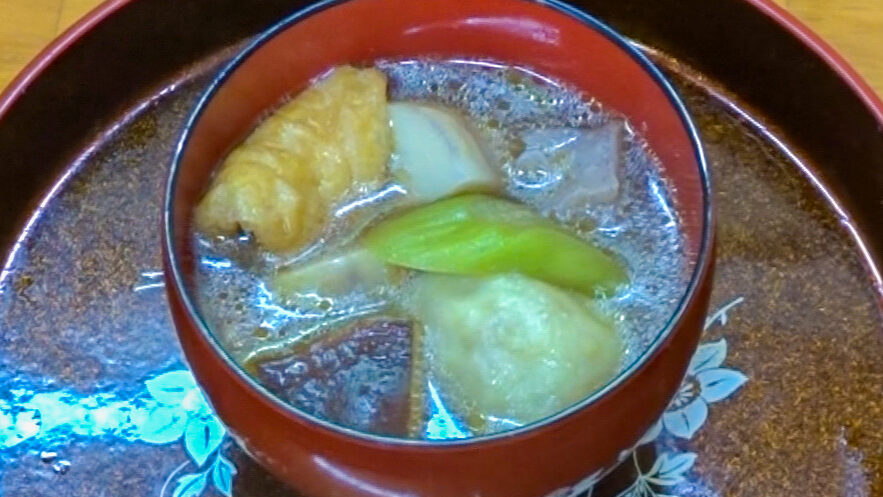
Hey there, food lovers! When you’re talking about the real flavors of Ehime, you’ve got to mention “Imotaki”[cite: 1]. This isn’t just any old dish; it’s a hearty, comforting hot pot that brings people together, especially when autumn rolls around[cite: 14, 15]. With its roots stretching back over 350 years, Imotaki is a true taste of tradition, featuring chicken, taro, and other local goodies[cite: 5, 6, 7].
Dish Name: Imotaki
- Region / Location: Ehime Prefecture (throughout the prefecture)[cite: 3].
- Primary Area of Tradition: Throughout Ehime Prefecture[cite: 3].
- Main Ingredients: Chicken, taro, fried tofu (atsuage), shiitake mushrooms[cite: 5].
How It’s Eaten / Served
To make Imotaki, the taro is peeled and lightly boiled with a bit of salt, and the fried tofu is cut into bite-sized pieces after removing excess oil[cite: 16]. Small dumplings are made from rice flour and boiled until cooked[cite: 16]. The chicken is stir-fried, then the taro and fried tofu are added and simmered in a flavorful broth[cite: 16]. Once the taro is tender, the rice flour dumplings and seasonings are added to create a sweet and savory flavor. It’s served hot, with plenty of the delicious broth[cite: 16].
Cultural Background and Preservation
Imotaki has a fascinating history, with its origins in Ozu City, dating back over 350 years to the Kato family’s rule[cite: 8]. It’s said that this dish began with a traditional event called “Okomori,” where people brought their locally grown taro to share in a communal hot pot[cite: 8]. In 1966, it became a part of the city’s tourism promotion, drawing large crowds to enjoy taro by the riverside under the moonlight[cite: 9]. The Myohoji Riverbank is a popular spot, where you can even enjoy the scenery alongside the famous cormorant fishing and the illuminated Garyu Sanso villa[cite: 10]. Today, Imotaki is enjoyed throughout Ehime, especially during autumn, when people gather by the river to share this seasonal delight[cite: 11]. Taro, a key ingredient, is considered a lucky food for celebrations because the small taro grow from the main taro, symbolizing fertility and prosperity[cite: 12].
Imotaki is still a popular home-cooked meal, passed down through families[cite: 17]. It’s also featured in school lunches and home economics classes, ensuring that younger generations develop a taste for this local flavor[cite: 17]. As a seasonal tradition, Imotaki is often served at community events, marking the arrival of autumn[cite: 18].
Additional information:
- Taro (里芋): A root vegetable with a slightly sticky texture, commonly used in Japanese cuisine.
- Atsuage (生揚げ): Thick slices of tofu that have been fried, resulting in a firm outer layer and a soft inside.
- Dashi (だし): A basic Japanese stock made from ingredients like kombu (kelp) and katsuobushi (bonito flakes), forming the base of many soups and stews.
The information about regional cuisine featured on this website (Piggy's Grandma of Japan) is summarized and adapted from the Ministry of Agriculture, Forestry and Fisheries of Japan (MAFF) website, "Our Regional Cuisines"Additional commentary is provided based on the unique experiences and perspectives of the site's editors.
The copyright for the original content regarding regional cuisine belongs to the Ministry of Agriculture, Forestry and Fisheries of Japan.
The summaries and adaptations published on this site are intended for informational purposes only. Piggy's Grandma of Japan does not guarantee the accuracy or completeness of this information. For the most accurate and complete details, please refer to the original pages on the MAFF website.

